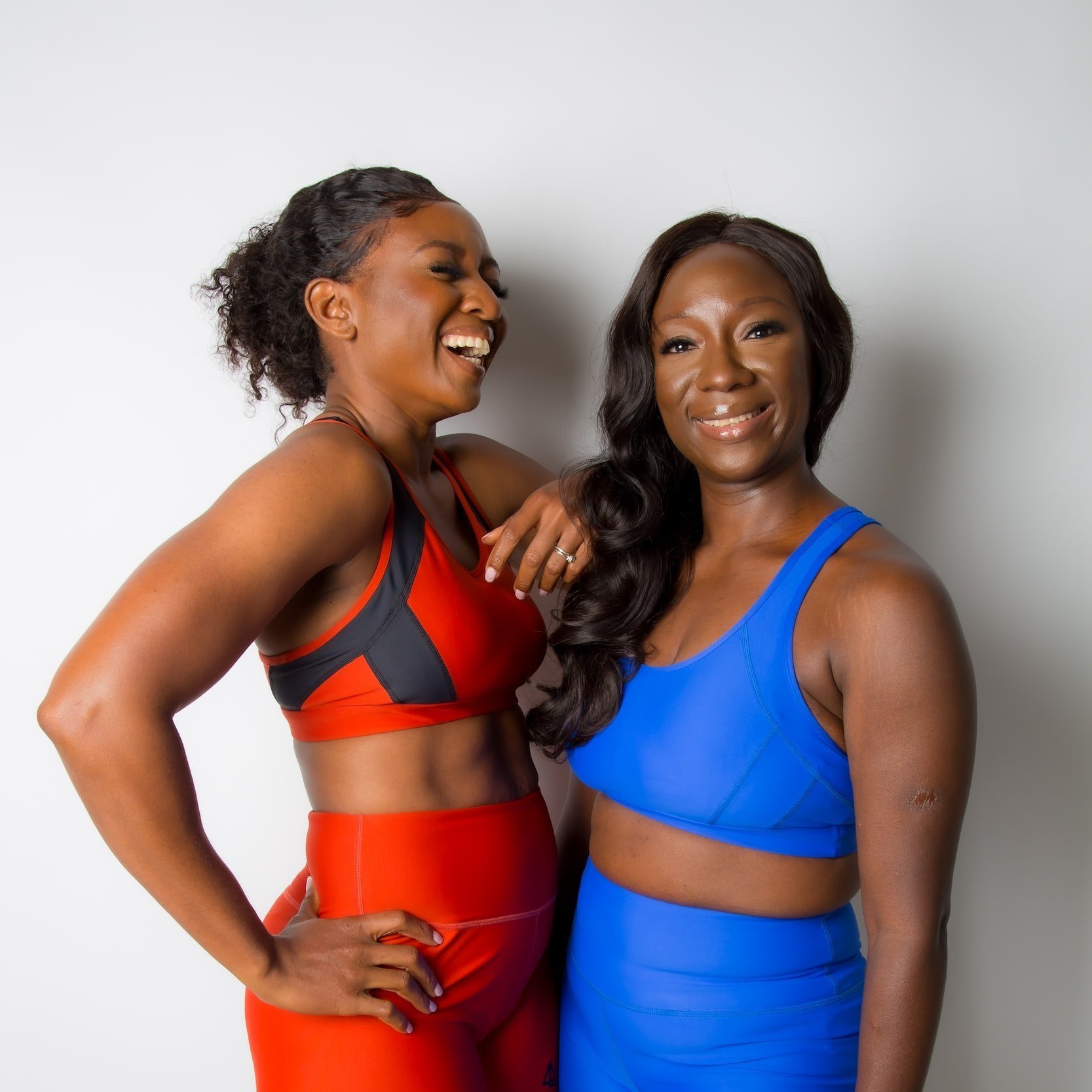Regrow Hair Naturally in 3 Weeks With This Simple Routine
W&S Health and Wellness Editor
SHARE ON:
Some of the links on this post might contain affiliate links. If you use any of these links to buy something we may earn a commission. For more information, please check out our disclosure statement. Thanks so much for supporting our free content!
PLEASE READ THE FOLLOWING ARTICLE’S DISCLAIMERS BY CLICKING HERE.
Understanding Hair Loss
Hair loss is a common concern that affects people of all genders and backgrounds. For many, it's not just a cosmetic issue but a deeply personal experience that can impact self-esteem and overall well-being. As we explore the intricacies of hair loss, it's important to recognize that women, especially women of color, can face unique challenges in this regard.
Hair loss, also known as alopecia, occurs when the hair follicles on the scalp go through a cycle of shrinking and producing finer, shorter hair strands. This can lead to thinning hair and visible scalp areas. Several factors contribute to hair loss, ranging from genetics and hormonal imbalances to lifestyle choices and underlying medical conditions.
Women of color, in particular, may experience specific types of hair loss due to their hair's unique texture and structure. The tightly coiled nature of textured hair can make it more susceptible to breakage and damage, especially when subjected to styling practices like tight braids, weaves, or chemical treatments. These practices can weaken the hair shaft and contribute to hair loss over time.
Hormonal imbalances, such as those related to polycystic ovary syndrome (PCOS) or certain medications, can also play a role in hair loss among women. Additionally, certain hairstyles that pull the hair tightly, like braids or ponytails, can lead to a type of hair loss called traction alopecia, which disproportionately affects women of color.
Studies have shown that stress can also contribute to hair loss. The physical and emotional stressors that women, especially those from marginalized communities, may face can trigger a condition known as telogen effluvium. This is a temporary form of hair loss where more hair follicles than usual enter the resting phase, leading to increased shedding.
Understanding the complex interplay of genetics, hormones, lifestyle factors, and cultural practices that contribute to hair loss is essential for developing effective strategies to address it. In the sections that follow, we will explore the natural process of hair growth, evidence-based methods to regrow hair within three weeks, and recommended products to support healthy hair regrowth. It's crucial to approach this journey armed with knowledge and tailored solutions that resonate with your unique hair needs.
As we delve into these topics, remember that regaining control over your hair health is not only about aesthetics but also about embracing your identity and boosting your confidence. Let's embark on this evidence-based journey to better understand hair loss and discover effective ways to address it naturally.
Understanding Hair Growth
Hair growth is a dynamic process that occurs in cycles, involving several stages: anagen, catagen, and telogen. The first phase, anagen, is the active growth phase, during which hair follicles produce new hair cells. This phase lasts anywhere from two to seven years, determining the length of the hair strand. Interestingly, the length of the anagen phase is genetically predetermined, which is why some individuals naturally have longer hair than others.
Following anagen is the catagen phase, a transitional period that lasts about two weeks. During this phase, the hair follicle shrinks and detaches from the blood supply, signaling the end of active growth. Finally, the telogen phase is a resting period that lasts around three months. It's during this phase that the old hair strand is pushed out by the new hair growing beneath it. Shedding occurs when the old hair is released from the scalp, making way for new hair growth.
While this cycle is essential for healthy hair maintenance, disruptions can occur due to various factors. Hormonal changes, such as those related to pregnancy or menopause, can impact the duration of each phase and lead to temporary hair thinning. Medical conditions, stress, poor nutrition, and certain medications can also affect the growth cycle.
For women of color, understanding the intricacies of hair growth is even more critical due to the unique characteristics of textured hair. The tight curl pattern can make it challenging for natural scalp oils to reach the hair shaft, resulting in potential dryness and breakage. Proper hair care practices that involve deep conditioning, gentle detangling, and protective styling are essential to maintain healthy hair growth.
Wondering why you’re seeing ads? Check out our Disclosure Policy.
Additionally, the role of hair porosity cannot be overlooked. Porosity refers to the hair's ability to absorb and retain moisture. High porosity hair, common among women with textured hair, can lead to increased breakage and damage. Effective strategies to manage porosity involve using hydrating products and sealing in moisture to prevent unnecessary hair loss.
By understanding the science behind hair growth and recognizing the unique needs of textured hair, women can make informed decisions to support and optimize their hair health. In the following section, we will explore evidence-based methods to naturally regrow hair within three weeks, empowering women to take charge of their hair journey and embrace their natural beauty.
How-To: Regrow Hair Naturally in 3 Weeks
When it comes to regrowing hair naturally, incorporating a combination of mindful practices and evidence-based remedies can make a significant difference. Let's delve into a holistic approach that encourages healthy hair growth within just three weeks.
1. Commit to Cutting Out Tight Hairstyles
Embracing protective and low-manipulation hairstyles can be instrumental in preventing unnecessary hair stress. Tight hairstyles, such as braids, ponytails, and buns, can exert tension on the hair follicles, leading to breakage and hair loss. Opt for low-tension hairstyles that allow your hair to breathe and reduce strain on your scalp.
2. Abstain from Chemical Treatments
Avoiding harsh chemical treatments, like hair dyes and chemical straightening, is crucial for maintaining healthy hair growth. These treatments can damage the hair shaft and weaken its structural integrity, leading to increased breakage. Opt for natural alternatives such as protective styling and embrace your hair's natural texture if you’re trying to get serious about hair growth.
3. Perform a Nightly, Upside Down Scalp Massage
Data suggests that nightly scalp massages can have a positive impact on hair growth. Engaging in a gentle, upside-down scalp massage stimulates blood flow to the hair follicles, promoting nutrient delivery and encouraging hair growth. This simple practice can be performed for a few minutes each night, using your fingertips to massage your scalp in circular motions.
4. Use Rosemary and/or Minoxidil Daily.
Rosemary oil has been shown to stimulate hair growth by improving blood circulation to the scalp and promoting cellular regeneration. Consider incorporating diluted rosemary oil into your scalp massage routine to harness its potential benefits. Additionally, topical Minoxidil, an over-the-counter hair growth medication, has been proven effective in some cases. Consult with a healthcare professional before using Minoxidil to ensure it's suitable for your individual needs.
Wondering why you’re seeing ads? Check out our Disclosure Policy.
5. Deep Condition at Least Once Per Week
Deep conditioning is a vital step in maintaining healthy hair, as it nourishes and moisturizes the hair strands. Opt for deep conditioning treatments at least once a week to replenish moisture, strengthen the hair, and minimize breakage. Look for products that are specifically formulated for your hair type and texture.
6. Sleep on a Silk Pillowcase or Wrap Hair in a Silk Headscarf
Caring for your hair even while you sleep is essential. Sleeping on a silk pillowcase or wrapping your hair in a silk headscarf can help prevent friction and reduce hair breakage. Silk's smooth texture minimizes tangles and helps retain your hair's moisture, supporting overall hair health.
By incorporating these holistic practices into your hair care routine, you can create an environment that supports natural hair growth. In the following section, we'll introduce Women & Sustainability™ approved products that complement your journey to regrow your hair naturally within three weeks. Stay tuned to discover how these products can further enhance your hair care routine and contribute to your overall well-being.
W&S Approved Products to Help You Regrow Your Hair Naturally in 3 Weeks
As you embark on the journey to regrow your hair naturally, selecting the right products can make a significant difference not only in your hair's health but also in supporting your values of conscious living. Women & Sustainability™ is dedicated to empowering you with information that helps you make mindful choices for your well-being and the planet. Here are our recommended consciously-made products, along with tips on what to look for when seeking eco-friendly and sustainable options:
1. Organic Rosemary Oil
When choosing organic rosemary oil, look for certifications such as USDA Organic or similar labels that ensure the oil is free from synthetic pesticides and chemicals. Opt for products that are packaged in glass bottles, which are more easily recyclable than plastic. Consider brands that prioritize ethical sourcing and sustainable practices in their production processes.
Our W&S Approved Recommendation:
Rosemary Essential Oil, Public Goods
2. Topical Minoxidil
If you decide to incorporate topical minoxidil into your routine, research brands that are committed to transparent ingredient sourcing and ethical manufacturing practices. Look for cruelty-free and vegan certifications, as well as packaging made from recyclable materials. Prioritize brands that align with your values of sustainable and responsible consumerism. We suggest using a Minoxidil alternative until you’ve discussed with your doctor what’s best for you and gain a proper prescription.
Our W&S Approved Recommendation:
GROW Hair Serum, VEGAMOUR
3. Wood Head Massager
When choosing a wood head massager, opt for products made from sustainably sourced wood or bamboo. These materials have a lower environmental impact compared to plastic. Look for brands that prioritize fair labor practices and provide information about their supply chain transparency.
Our W&S Approved Recommendation:
Stimulating Scalp Massager, EcoTools
4. Silk Scrunchies
Seek silk scrunchies that are made from ethically sourced silk and dyed using eco-friendly methods. Brands that promote fair wages for workers and support local communities are worth considering. Choose scrunchies that are free from harmful chemicals and dyes, ensuring they are safe for both you and the environment.
Our W&S Approved Recommendation:
Organic Peace Silk Scrunchie, Ethical Kind
5. Silk Pillowcase
Select silk pillowcases that are OEKO-TEX certified, indicating that they have been tested for harmful substances. Consider brands that use sustainable silk farming practices and promote fair labor conditions. Look for pillowcases that are biodegradable or come in recyclable packaging, minimizing their impact on the environment.
Our W&S Approved Recommendation:
100% Mulberry Silk Pillowcase, Quince
By prioritizing these criteria when shopping for consciously-made products, you're not only making choices that benefit your hair's health but also contributing to a more sustainable and responsible consumption pattern. Each purchase you make sends a message to brands and manufacturers, encouraging them to continue producing in ways that align with your values and support a healthier planet. Your journey to regrow your hair naturally can be a harmonious blend of self-care and environmental stewardship.
















